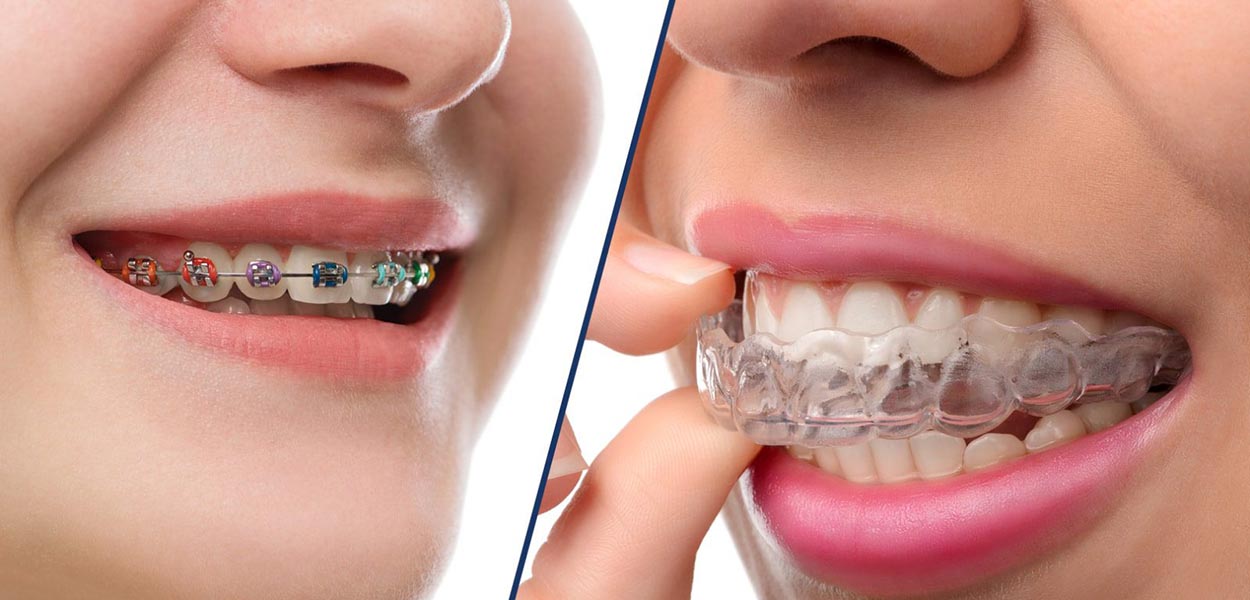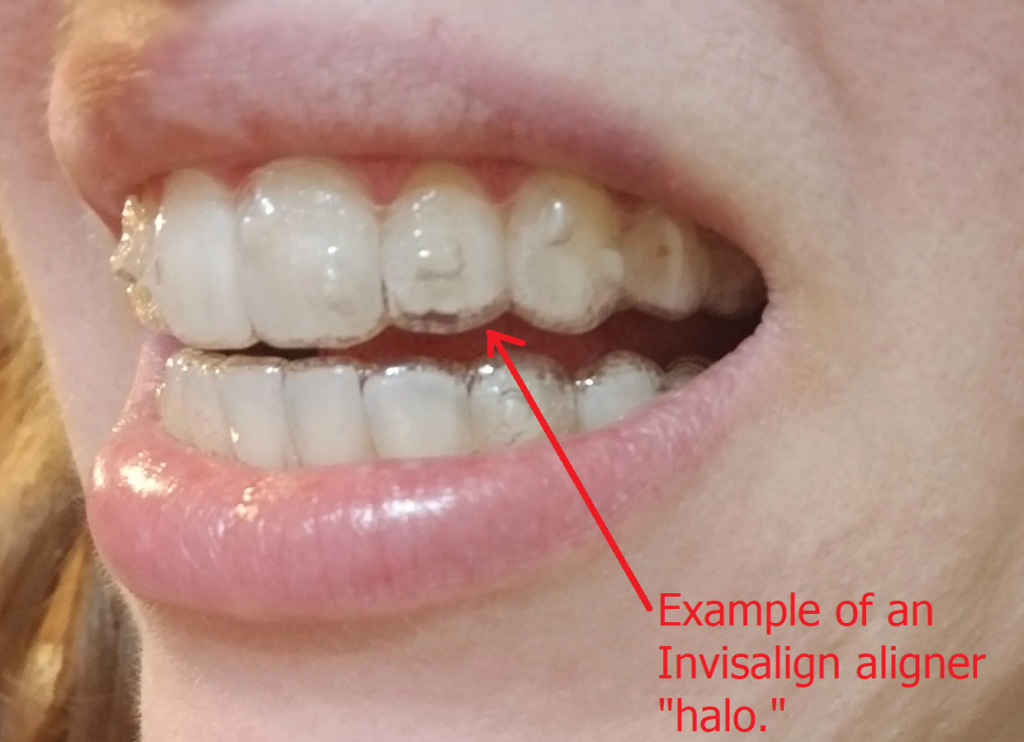Invisalign for Teens: A Modern Solution to Straightening Young Smiles
Invisalign for Teens: A Modern Solution to Straightening Young Smiles
Blog Article
Invisalign vs. Standard Dental braces: Which Choice Is Right for You?
When taking into consideration orthodontic therapy, the selection between Invisalign and conventional braces provides numerous crucial variables that warrant mindful examination. Invisalign offers a discreet option with detachable aligners, while typical dental braces provide a more noticeable yet reliable option for extreme misalignment.
Review of Therapy Options

On the other hand, traditional braces contain steel brackets and cables that are adhered to the teeth. This technique applies constant stress with time to achieve placement. While reliable for complicated orthodontic concerns, conventional dental braces call for normal check outs for modifications and can present difficulties in keeping dental health as a result of the trouble of cleansing about braces and cords.
Both alternatives have their benefits, and the selection usually rests on details oral conditions, way of life choices, and individual conformity. Ultimately, seeking advice from an orthodontic professional is critical for determining one of the most ideal treatment strategy customized to private requirements. Comprehending the nuances of each choice can considerably affect the general success of orthodontic treatment.
Aesthetic Considerations
A considerable aspect affecting the selection between Invisalign and conventional dental braces is the visual appeal each treatment supplies. Invisalign aligners are crafted from clear plastic, making them essentially unnoticeable when worn.
In comparison, typical braces consist of steel brackets and wires, which can be more visible. While improvements in orthodontic technology have actually resulted in the growth of smaller braces and tinted elastics, standard braces still maintain an even more obvious account. For some people, the presence of braces might hinder them from looking for essential treatment.
Eventually, the option between Invisalign and typical dental braces might pivot on individual preferences concerning appearances. People that prioritize discretion typically lean toward Invisalign, while those that are much less worried about visibility might choose conventional braces. Recognizing the visual ramifications of each alternative is critical for making a notified choice that straightens with one's way of life and preferences.
Convenience and Convenience

In regards to comfort, Invisalign aligners are detachable, allowing individuals to appreciate their favorite foods without limitation and keep ideal read what he said oral hygiene. Brushing and flossing are simplified, as the aligners can be obtained during these regimens, whereas standard dental braces call for careful maneuvering around cords and braces.
In comparison, conventional braces necessitate regular adjustments, making them less convenient for those with busy routines. Overall, the comfort and ease of Invisalign make it an enticing selection for several people seeking orthodontic treatment.
Treatment Period and Effectiveness
While both Invisalign and standard dental braces work in correcting dental misalignments, the period of treatment click here for more can differ substantially between both alternatives. Usually, Invisalign treatment can take anywhere from 12 to 18 months, depending on the complexity of the case. The clear aligners work by gradually changing teeth right into their desired settings, and routine follow-ups with an orthodontist assistance ensure progress stays on the right track.
On the other hand, traditional dental braces frequently require a longer commitment, generally ranging from 18 months to three years. This is because of their fixed nature and using braces and cables, which can be a lot more effective for complicated instances and serious imbalances (Invisalign). The treatment efficiency of typical braces is well-documented, as they enable accurate adjustments and higher control over tooth movement
Ultimately, the choice between Invisalign and traditional dental braces might hinge on both the anticipated treatment duration and the certain oral problems available. Consulting with an orthodontist is vital, as they can give tailored suggestions based upon individual demands, making certain the selected technique lines up with preferred timeframes and results.
Cost Contrast and Insurance Coverage Options
Cost plays a substantial duty in the decision-making procedure for people thinking about orthodontic treatment, whether choosing for Invisalign or typical dental braces. On standard, the expense of Invisalign arrays from $3,000 to $8,000, while conventional dental braces commonly cost in between $2,000 and $6,000. Factors influencing these costs include the intricacy of the situation, the period of therapy, and geographical place.
Insurance protection can dramatically affect out-of-pocket expenditures. Many oral insurance plans give partial protection for orthodontic therapies, yet the specifics can differ commonly. It is vital for patients to assess their insurance policy policies to figure out the level of protection for either option. Normally, standard dental braces might be extra regularly covered by insurance plans compared to Invisalign, which some insurance providers categorize as an aesthetic procedure.
In addition, a number of orthodontic techniques offer versatile repayment strategies, making both therapy choices extra easily accessible. Patients ought to ask about possible funding options and discount rates for upfront settlements. Assessing the complete cost, consisting of insurance policy advantages and layaway plan, is important for making a notified decision that lines up with both aesthetic preferences and budget plan considerations.

Conclusion
In recap, the choice in between Invisalign and conventional dental braces hinges redirected here on several variables, including aesthetic choices, convenience, treatment duration, and cost. Invisalign provides a discreet, removable choice that facilitates oral health and dietary versatility, while conventional braces may be preferable for intricate oral problems and usually come at a reduced rate point. Eventually, consultation with an orthodontist is essential to examine individual conditions and identify the most ideal therapy option for achieving optimum oral alignment.
When thinking about orthodontic therapy, the choice between Invisalign and typical dental braces presents several crucial elements that merit cautious examination.Contrasting Invisalign and conventional braces reveals distinct therapy alternatives for orthodontic improvement.While both Invisalign and typical dental braces are effective in correcting dental imbalances, the duration of treatment can vary substantially in between the two options.Expense plays a significant duty in the decision-making procedure for people considering orthodontic treatment, whether opting for Invisalign or traditional braces.In recap, the choice in between Invisalign and conventional braces hinges on numerous variables, including visual preferences, convenience, treatment duration, and price.
Report this page